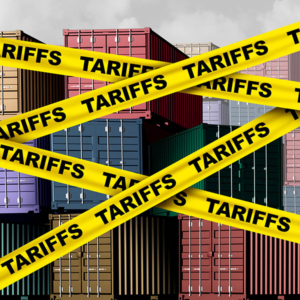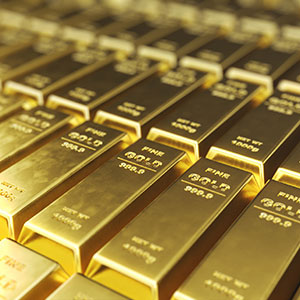
The jewelry and gem trade generally expressed relief after President Trump announced yesterday that he was implementing a 90-day pause on the steep “reciprocal tariffs” the U.S. had put in place about 12 hours earlier.
Even with the pause, nearly all imports—including those from India, the world’s largest jewelry supplier—remain subject to a historically high 10% tariff, enacted by Trump on April 5. The U.S. has also raised the duty on Chinese imports to 145%, a sign of increasing trade tensions between the two countries.
Trump said yesterday that he decided to hold off on the tariffs because the stock and bond markets were making people “a little queasy.” While the White House had previously maintained that the tariffs were not negotiable, Trump yesterday told reporters, “A lot of times, it’s not a negotiation until it is.”
Industry analyst Paul Zimnisky tells JCK that the 90-day pause “will allow the trade to carry on with business for now. The market was beginning to freeze up.”
He’s hoping that the U.S. will enact more “reasonable” and “targeted” tariffs, in a “less bombastic” way.
The National Retail Federation’s executive vice president of government relations, David French, tells JCK via email: “While we appreciate the 90-day pause, there remains great concern about the uncertainty of the tariffs. The global tariff remains in place and is a significant tax increase on imports. The escalation with China is concerning as well, especially for companies that are not able to shift their sourcing. We agree on the need for better trade, but we need to use tools other than tariffs to achieve those deals.”
Following news of the 90-day reprieve, Signet sent vendors a note saying that the jewelry giant is “not accepting any new tariff impacts to current purchase orders.”
The note, signed by four Signet executives, said vendors could have “two-week extensions on all open purchase orders that are not currently landed to the U.S.” to mull over their response. “If you are willing to accept the impact of the tariffs within this two-week period,” it said, “then please continue shipping.”
The paused tariffs included 26% for India, 37% on Botswana, and 32% on imports from Switzerland, including its famed watches. The tariffs were calculated based on the countries’ trade deficits with the United States.
Leanne Kemp, CEO of Everledger, a supply chain platform, tells JCK that Indian companies were scrambling to send goods to the United States last week to avoid the new fees. She says that if dealers in India had to pay 26% duty, it would have eaten up all their profit margin.
“Memo and consignment would have been in real trouble,” Kemp says. “If you have a $2.5 million order and you have to put a half million up front, that is not an affordable position.”
On a webinar today, Martin Rapaport said his noted diamond price list, which quotes “high New York asking prices,” will factor in the new 10% tariffs.
“Tariffs will become a normal part of the diamond business,” said Rapaport. “Get used to them.
“If you’re in America and selling American goods, you’re golden,” he said. “If you import, you have a problem.”
However, Monica Stephenson, founder of Anza Gems, argued on LinkedIn that it’s impossible to make jewelry with materials sourced solely from the States.
“Our materials [are] coming from literally all over the globe,” she wrote. “The idea that we can just switch to U.S.-based providers for materials or components is a glittery fever dream.”
In related news, the European Union initiated its own 90-day pause on the levies it was imposing against the United States, in response to U.S. steel and aluminum tariffs. Affected goods reportedly included several jewelry items but not polished diamonds, after lobbying by Antwerp World Diamond Centre (AWDC).
“It’s common practice in our industry for diamonds to be shipped multiple times between Belgium and the U.S.—for example, to obtain a grading report from one of the major diamond labs based there,” said Karen Rentmeesters, CEO of AWDC, in a statement. “Without this decision, those same diamonds would have been subject to import tariffs not once but twice: upon entry into the U.S. and again when returning to Europe.”
While very few diamonds would be considered U.S. origin for trade purposes—since country of origin is generally determined by where a diamond is cut—the administrative burden of having to prove that would have been onerous, Rentmeesters tells JCK.
(Photo: Getty Images)
- Subscribe to the JCK News Daily
- Subscribe to the JCK Special Report
- Follow JCK on Instagram: @jckmagazine
- Follow JCK on X: @jckmagazine
- Follow JCK on Facebook: @jckmagazine





